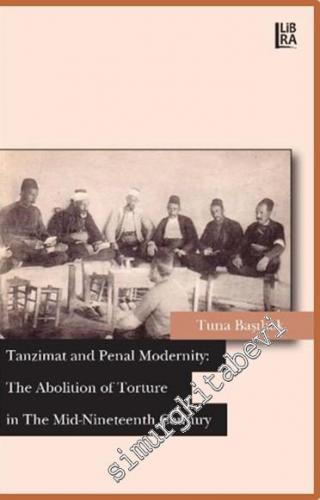#smrgKİTABEVİ Tanzimat and Penal Modernity: The Abolition of Torture in the Mid-Nineteenth Century -

The anti-torture law was an outcome of a global legislative wave against body-oriented punitive methods. Beyond legal aspect, however, this book tries to concentrate on its utilization in everyday court practices by ordinary Ottoman subjects. Moreover, it reevaluates foreign diplomatic pressure on the Tanzimat statesmen about ongoing practice of unlawful torture thus establishing a bond between a global legislative trend and simple judicial strategies of Ottomans.
İçindekiler
TABLE OF CONTENTS
ACKNOWLEDGMENTS
NTRODUCTION
THEORETICAL ELABORATION AND A HISTORICAL BACKGROUND OF TORTURE AND ITS USE AND ABOLITION IN THE OTTOMAN JUDICIAL SYSTEM
Defining Torture and Its Application before the Mid-Eighteenth Century
Theoretical Considerations on Torture
Torture on the Course
The Abolition of Torture and Corporal Punishment
THE TORTURED BODIES OF OTTOMAN SUBJECTS AND NINETEENTH CENTURY LIBERALISM
The Anti-Torture Law in Tanzimat Diplomacy Diplomatic Intervention and Its Immediate Results in the Provinces
THE SOCIAL CONTENT OF ANTI-TORTURE LAW AND POPULAR DISCOURSES OF TANZIMAT LAW
The Anti-Torture Law in Ottoman Daily Life Legal Stratagems of Ordinary Ottomans: "I Said The First Thing Which Came To My Mind
CONCLUSION
BIBLIOGRAPHY
INDEX
The anti-torture law was an outcome of a global legislative wave against body-oriented punitive methods. Beyond legal aspect, however, this book tries to concentrate on its utilization in everyday court practices by ordinary Ottoman subjects. Moreover, it reevaluates foreign diplomatic pressure on the Tanzimat statesmen about ongoing practice of unlawful torture thus establishing a bond between a global legislative trend and simple judicial strategies of Ottomans.
İçindekiler
TABLE OF CONTENTS
ACKNOWLEDGMENTS
NTRODUCTION
THEORETICAL ELABORATION AND A HISTORICAL BACKGROUND OF TORTURE AND ITS USE AND ABOLITION IN THE OTTOMAN JUDICIAL SYSTEM
Defining Torture and Its Application before the Mid-Eighteenth Century
Theoretical Considerations on Torture
Torture on the Course
The Abolition of Torture and Corporal Punishment
THE TORTURED BODIES OF OTTOMAN SUBJECTS AND NINETEENTH CENTURY LIBERALISM
The Anti-Torture Law in Tanzimat Diplomacy Diplomatic Intervention and Its Immediate Results in the Provinces
THE SOCIAL CONTENT OF ANTI-TORTURE LAW AND POPULAR DISCOURSES OF TANZIMAT LAW
The Anti-Torture Law in Ottoman Daily Life Legal Stratagems of Ordinary Ottomans: "I Said The First Thing Which Came To My Mind
CONCLUSION
BIBLIOGRAPHY
INDEX





















